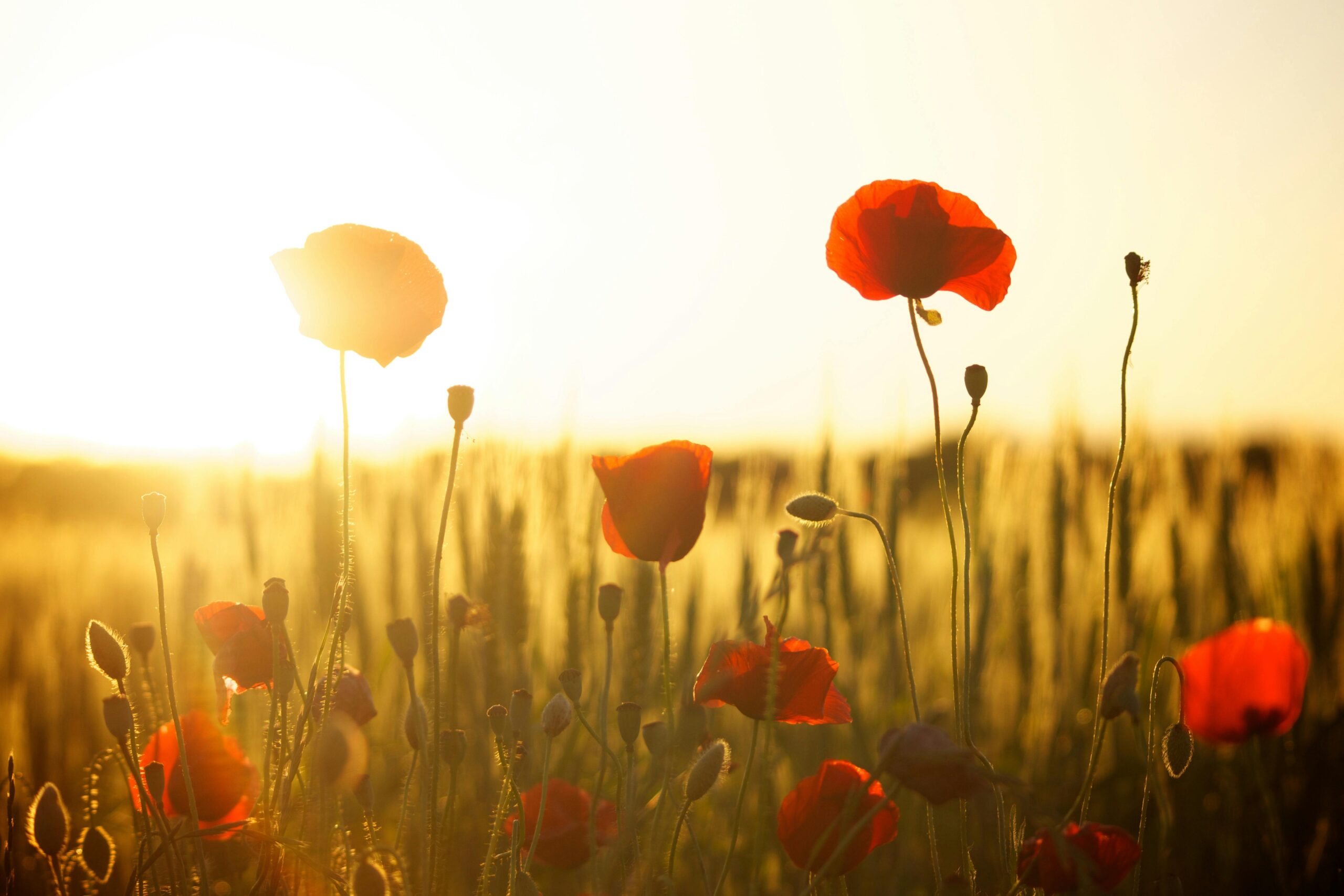Discover the Daily Holidays and Observations of September 2025


Each May, scarlet petals appear on jacket lapels, wreaths, and parade floats across the United States. The humble red poppy—born from the blood-soaked battlefields of World War I—has grown into one of America’s most moving symbols of remembrance. Inspired by the poem “In Flanders Fields,” the poppy reminds us that freedom’s price is measured in lives lost and futures sacrificed. Its vivid color catches the eye; its meaning captures the heart.
Lieutenant Colonel John McCrae was a Canadian physician, artillery officer, and poet who had already served in the Boer War before volunteering for World War I. In April 1915, while tending the wounded during the Second Battle of Ypres, he noticed bright red poppies blooming amid the devastation. Saddened by the death of a close friend and countless other soldiers, he poured his grief into the poem “In Flanders Fields.”
by Lieutenant Colonel John McCrae (1915)
In Flanders fields the poppies blow
Between the crosses, row on row,
That mark our place; and in the sky
The larks, still bravely singing, fly
Scarce heard amid the guns below.
We are the Dead. Short days ago
We lived, felt dawn, saw sunset glow,
Loved and were loved, and now we lie
In Flanders fields.
Take up our quarrel with the foe:
To you from failing hands we throw
The torch; be yours to hold it high.
If ye break faith with us who die
We shall not sleep, though poppies grow
In Flanders fields.
Across the ocean, University of Georgia professor Moina Michael read McCrae’s verse in 1918 and vowed to wear a red poppy in memory of “all who died.” She soon launched a campaign to make the blossom a perpetual emblem of remembrance, earning the nickname “The Poppy Lady.”
Recognizing the symbol’s power, the newly formed American Legion adopted the poppy in 1920. Legion and Auxiliary volunteers began crafting crepe-paper poppies, offering them in exchange for donations that funded rehabilitation, employment training, and other assistance for disabled veterans. The simple flower thus became both a tribute to the dead and a lifeline for the living.
To renew public awareness, Congress designated the Friday before Memorial Day as National Poppy Day™ in 2017. On this day—and throughout the holiday weekend—Americans are encouraged to pin a poppy over their hearts, attend local ceremonies, and share the flower’s story.
A single crimson flower, delicate yet determined, bridges the past and present. When we pin a poppy on Memorial Day, we carry forward the voices of those who can no longer speak—soldiers who trusted future Americans to remember their sacrifice.